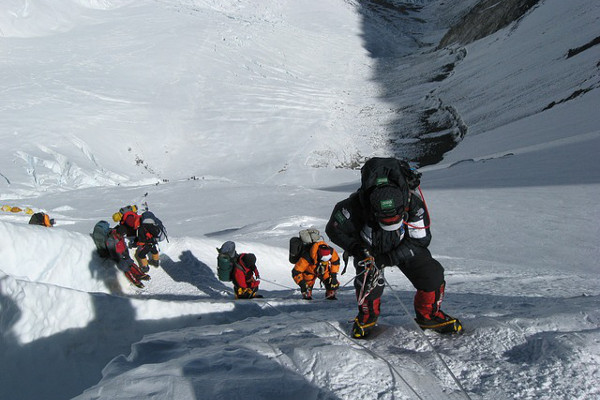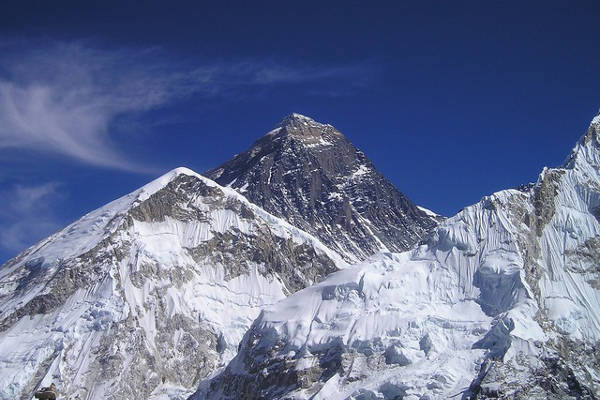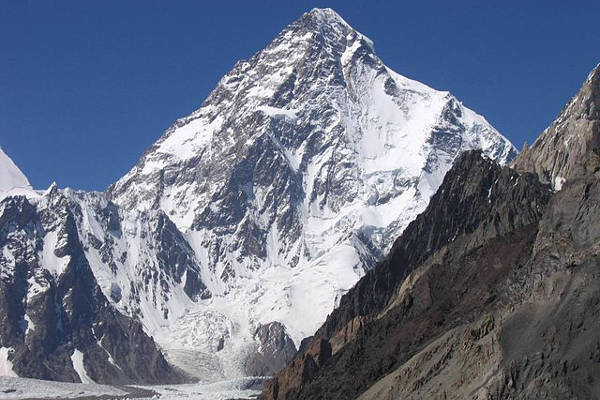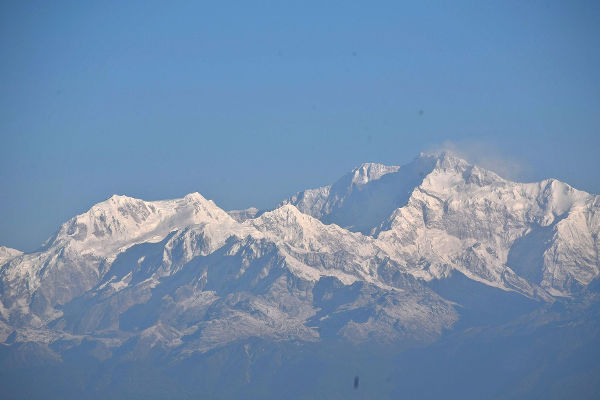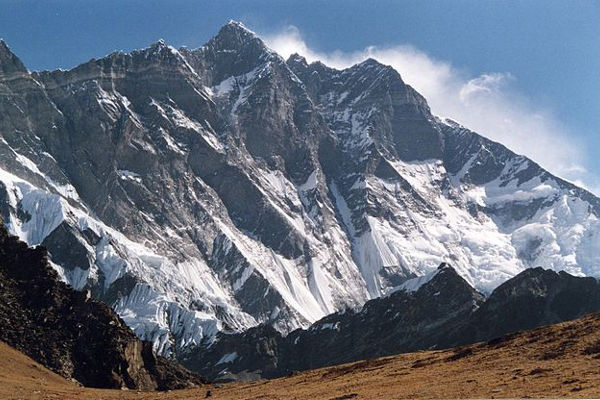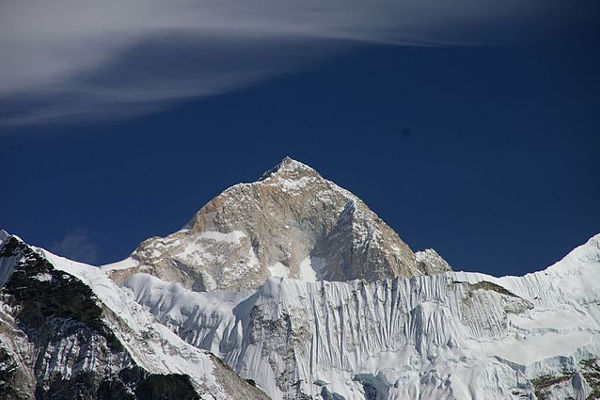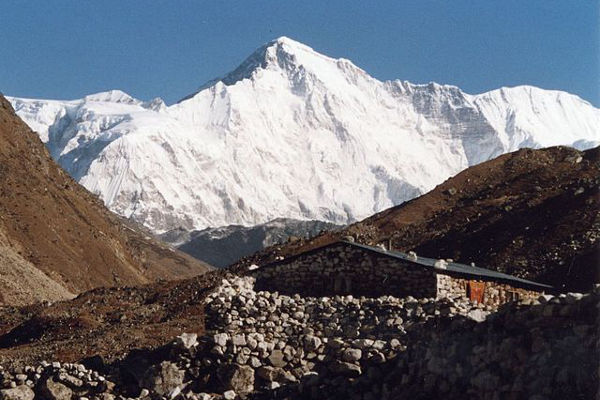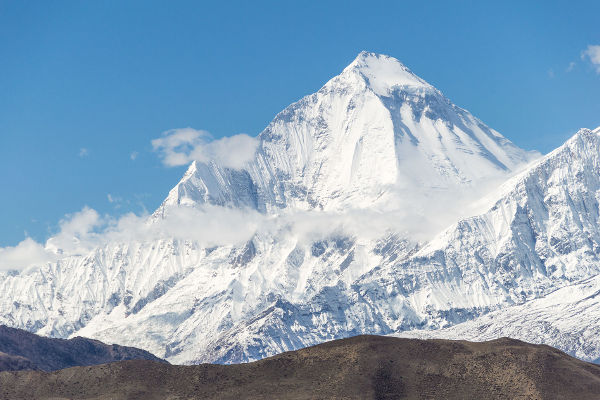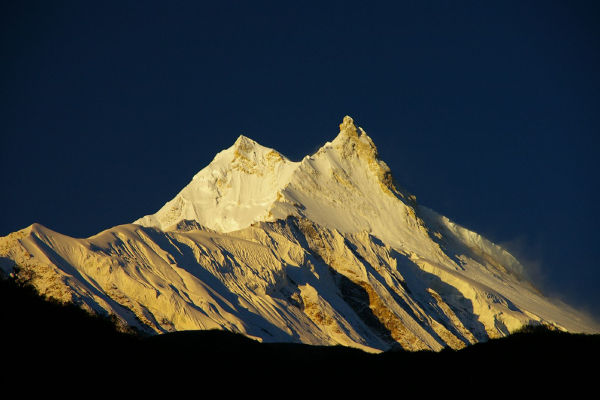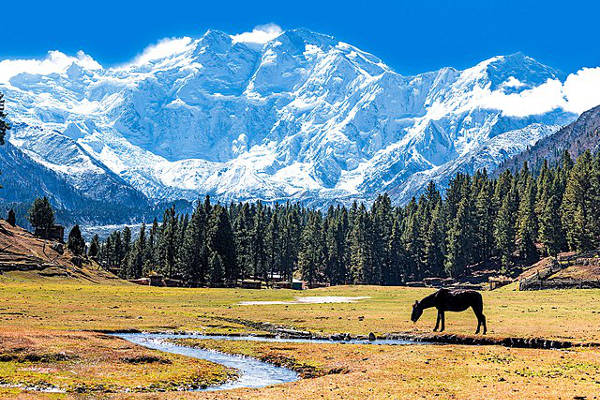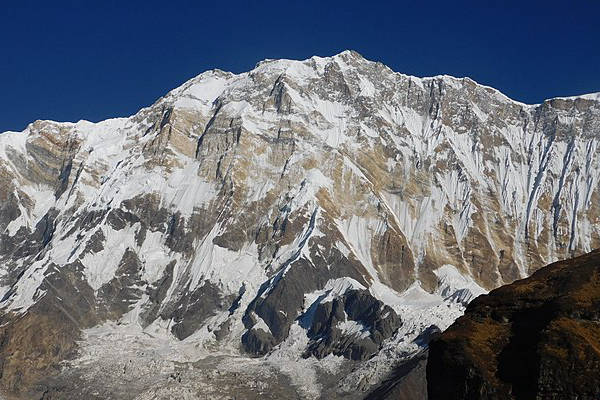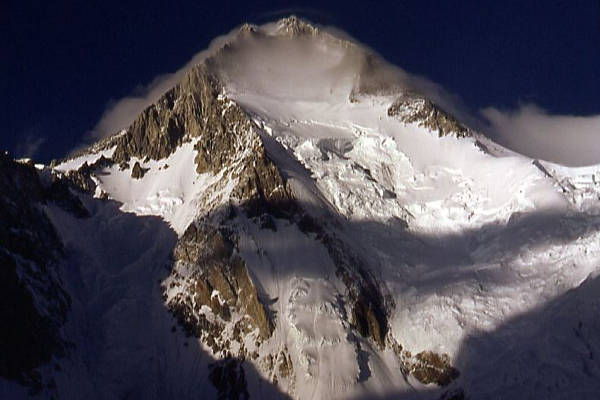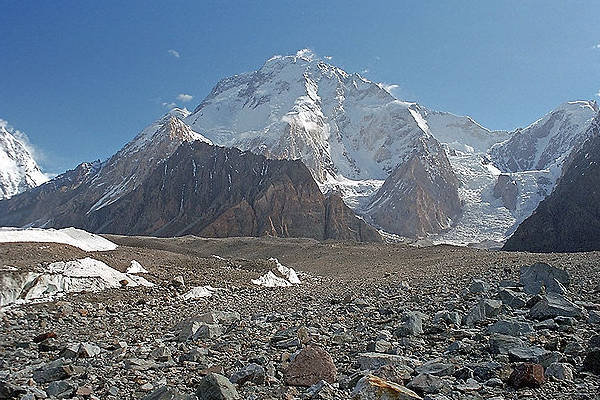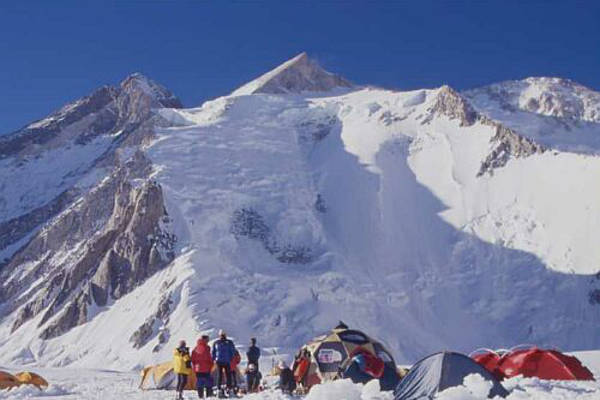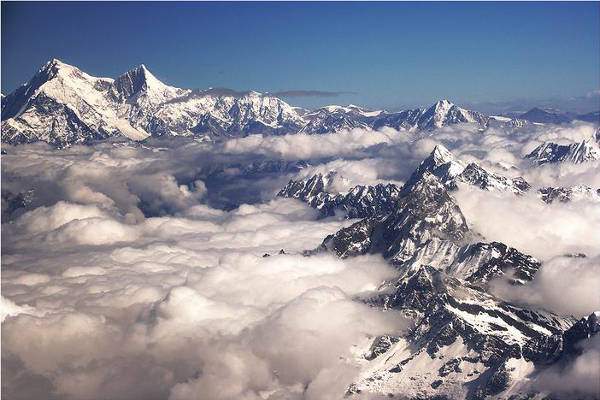The eight thousanders, aka 8000ers, consist of the 14 highest mountains in the world, all of which are 8,000m (26,247 ft) above sea level.
All of the 8000ers are located in the Himalayas and Karakoram mountain ranges of Asia and are highly coveted in the mountaineering world.
Italian mountaineer, Reinhold Messner, was the first person to climb all 8000m peaks. He completed this feat in 1986, reaching the summit of every eight thousander without the use of supplementary oxygen.
On this page we provide detailed information and statistics on the eight thousanders.
Eight Thousanders - Stats
The eight thousanders statistics below have been pulled together from dispersed sources like the Himalayan Database and Alan Arnette's blog.
We have had to estimate certain stats where poor public information is not available. If you notice an inaccurate figure please leave a comment at the end of this article and we will correct the data.
Stats are up to date as of 2018.
As you can see, Mount Everest has the most summits by a long margin. In total we estimate around 5,500 people have summited Mount Everest (many people have summited more than 2 times).
Annapurna I remains the most dangerous 8000er to climb, with a summit to death ratio of 27%. This is closely followed by K2 (22.8%) and Nanga Parbat (20.75%).
Cho Oyu is the safest of the eight thousanders, with over 3680 summits and 50 deaths, for a summit to death ratio of 1.35%.
As of 2019, K2 remains the only 8000er not to have been climbed in Winter.
8000er | Height | Summits (est.) | Deaths | Summit to Death % |
|---|---|---|---|---|
Shishapangma | 8,027m 26,335 ft | 350 | 31 | 8.85% |
Nanga Parbat | 8,126m 26,660ft | 400 | 83 | 20.75% |
Mount Everest | 8,848m 29,029ft | 8,950 | 295 | 3.29% |
Manaslu | 8,163m 26,781ft | 650 | 81 | 12.4% |
Makalu | 8,485m 27,838ft | 410 | 41 | 10% |
Lhotse | 8,516m 27,940ft | 700 | 18 | 2.57% |
Kangchenjunga | 8,586m 28,169ft | 300 | 45 | 15% |
K2 | 8,611m 28,251ft | 367 | 84 | 22.8% |
Gasherbrum II | 8,035m 26,362ft | 1000 | 23 | 2.3% |
Gasherbrum I | 8,080m 26,510ft | 350 | 34 | 9.71% |
Dhaulagiri I | 8,167m 26,795ft | 540 | 73 | 13.5% |
Cho Oyo | 8,188m 26,864ft | 3,681 | 50 | 1.35% |
Broad Peak | 8,051m 26,414ft | 406 | 34 | 8.37% |
Annapurna I | 8,091m 26,545 ft | 261 | 71 | 27.2 |
8000ers - Detailed Overview
1. Mount Everest (8,848m/29,029ft)
Mount Everest (8,848m/29,028.9ft) is the highest mountain on earth and the most sought after mountaineering experience among the Eight Thousanders.
Situated in the Mahālangūr Himāl, a sub-range of the Himalayas, on the border of Nepal and Tibet, Mount Everest is part of the coveted 7 Summits.
There are two main routes on Mount Everest - the southern route via Everest Base Camp in Nepal, and the northern route via China / Tibet.
The southern route takes climbers along the South East Ridge of Mount Everest and is a lot more popular than the northern approach. There are a number of reasons why the southern approach is more popular but the two main reasons are:
- The southern approach is considered a little easier / less technical (although one needs to contend with the dangerous Khumbu Icefall).
- Political stability in Nepal vs China / Tibet makes it easier to logistically plan and execute an expedition.
The Everest climbing season is in the spring months of April and May. Summiting this mountain is an expensive experience. Many adventurers are put off by the high price to climb Everest.
Checkout our article of fun facts about Mount Everest.
2. K2 (8,611m / 28,251ft)
K2 (8,611m / 28,251ft), also known as Mount Godwin-Austen or Chhogori, is the second highest mountain in the World.
The mountain is located on the China-Pakistan border and is the highest mountain in both these countries and in the Karakoram range.
There are a number of routes for climbers to approach K2, although most take the Abruzzi Spur route. Climbing steep snow and ice slopes, mountaineers with need advanced technical climbing skills.
Located on the opposite side of K2 is the North Ridge route. Climbers rarely take this route due to difficult access that involves crossing the Shaksgam River. It is also more technically difficult than the Abruzzi with its long, steep rock ridge climb.
The main K2 climbing season is between July and August. K2 has yet to be climbed in Winter (last updated 2019).
1st Summit, Success Rates & Deaths
Costs, Technicalities and Length
3. Kangchenjunga (8,586m / 28,169ft)
Lying between Nepal and Sikkim, you will find what was once assumed to be the highest mountain in the world, Kangchenjunga (8,586m / 28,169ft).
This 8000er is part of the Himalayas range and is the highest mountain in India. Known as the Five Treasures of the Great Snow, Kangchenjunga is considered to be sacred by the people of Sikkim with some expeditions stopping a few feet from the top to respect the ancient beliefs of the people of Sikkim.
Kangchenjunga doesn’t offer an “easy” route for climbers and the threat of avalanches is high. While the Indian government banned expeditions to Kangchenjunga using the northeastern route from Sikkim in 2000, mountaineers can utilise the 3 other routes that are located in Nepal.
Autumn and Spring are the best times to climb Kangchenjunga.
1st Summit, Success Rates & Deaths
Costs, Technicalities and Length
4. Lhotse (8,516m / 27,940ft)
Lhotse (8,516m / 27,940ft) is the fourth highest mountain in the World and one of the most popular eight thousander peaks as it is connected to its “big brother” through the South Col.
Lhotse has 3 summits - Lhotse Main (8,516m), Lhotse Shar (8,383m), and Lhotse East (8,413) - and is best known for its dramatic south face. It’s been dubbed as the steepest face of horizontal distance in the world and is difficult to climb.
Lhotse’s main summit lies on the border between Tibet of China and the Khumbu region in Nepal. Most climbers use the primary route through Everest’s South Col, however there are a number of different approaches to the mountain.
Both spring and autumn are considered the best times for an expedition up Lhotse.
1st Summit, Success Rates & Deaths
Costs, Technicalities and Length
5. Makalu (8,485m / 27,838ft)
Makalu (8,485m / 27,838ft) is the fifth highest mountain in the world and a prominent member of the eight thousanders. Climbing Makalu is both a challenging and serious effort that is rife with difficulties.
Makalu's iconic pyramid peak is located on the border between Nepal and Tibet with 2 prominent ridges providing the main climbing routes - North Western ridge and the South Eastern ridge. At the base of the summit, you will find the natural wonder of the Barun Valley that is ample in elevated waterfalls, flora and fauna and different ethnic communities.
The North Western ridge route is used by experienced mountaineers to approach the top of the peak. It involves a sustained steep slope that offers magnificent views.
The more commercial route is the South East ridge. This route allows for more moderate technical exposure with some fixed rope requirements.
Like the other 8000er peaks, the best time to climb Makalu is in Spring and Autumn.
1st Summit, Success Rates & Deaths
Costs, Technicalities and Length
6. Cho Oyu (8,188m / 26,864ft)
Cho Oyu is known as the 6th highest mountain in the world and is arguably the "easiest" 8000er to climb. For mountaineers looking for an Everest “mock exam", Cho Oyu provides excellent practice. By the end of the climb, you will have nailed using oxygen and refined your mountaineer skills. The climbing route is relatively straightforward and is almost hazard-free with only a few sections requiring technical attention. It is however, very cold!
Lying in the heart of the Tibetan and Nepalese Himalayas, climbers will get a wonderful view of the hundreds of peaks that are scattered throughout the Himalayas.
The most popular route is the West Ridge. The fact that Cho Oyu has been dubbed the “easiest” 8000er to complete shouldn’t be taken lightly. Taking the West Ridge route requires little technical skills but it is dotted with glacier crevasses, snow and loose scree.
The second most popular route is the South East Ridge through the Nangpa La Pass. It’s best for more experienced Alpine climbers due to the increased difficulty.
As with most Himalayan expeditions, spring and autumn are the best times of year to climb.
1st Summit, Success Rates & Deaths
Costs, Technicalities and Length
7. Dhaulagiri I (8,167m / 26,795ft)
The snowy attraction of Dhaulagiri I (8,167m / 26,795ft) is undeniable. Being the 7th highest mountain in the world and the highest that’s wholly located in Nepal, it’s one of the lesser climbed 8000er peaks due to its remoteness.
Dhaulagiri is famous, or perhaps infamous, for its accessibility and high-risk avalanches. Even the most experienced climbers find it challenging to reach the top.
There are a number of climbing routes on Dhaulagiri I but the most popular route is the North-East ridge due to the route’s avoidance of the steepest part of the icefall. Climbers will enjoy this route for its straightforward layout but it does have very real and dangerous challenges that shouldn’t be taken lightly.
1st Summit, Success Rates & Deaths
Costs, Technicalities and Length
8. Manaslu (8,163m / 26,781ft)
Manaslu (8,163m / 26,781ft), or the Mountain of the Spirit, is the eighth highest mountain in the World.
The mountain is situated in the Gorkha District of Nepal, about 64km east of another famous eight thousander, Annapurna.
Manaslu is regarded as one of the more difficult 8000ers to summit, with approximately 650 successful summits, and around 80 deaths.
In September 2014, Polish mountaineer Andrzej Bargiel set a record time from base camp to summit of 14 hours 5 minutes and also record time for base-peak-base of 21 hours 14 minutes.
1st Summit, Success Rates & Deaths
Costs, Technicalities and Length
9. Nanga Parbat (8,126m / 26,660ft)
Nanga Parbat is the 9th highest mountain in the world and is known for its immense and dramatic peak that rises above the western anchor of the Himalayas. Earning the nickname “Killer Mountain”, mountaineers can expect a notoriously difficult climb that comes with well-earned bragging rights.
Located in the Diamer District of Gilgit Baltistan, Nanga Parbat is one of only two peaks that rank in the top twenty list of both highest mountains in the world and the most prominent peaks in the world. It has three major faces, Diamir, Rakhiot, and Rupal. Rupal is the highest mountain face in the world and is astoundingly difficult to climb.
You can start your summit from either of these 3 major faces. If you’re up for a winter challenge, the most common route is the Schell route. It’s often considered an easier and safer climb during the winter months.
Most climbers take the Diamer District route in Spring or Autumn as it is the easiest route to reach the peak. This west facing route is also considered to be the safest option for climbers. The route is better known as the Kinshoefer Route and was first successfully climbed in 1962. Mountaineers can expect some snow, icy pastures and rocky terrain along this route.
June to September is deemed to be the normal time to climb the mountain. Outside this period, snow can grow to be problematic when mixed with the high altitude.
1st Summit, Success Rates & Deaths
Costs, Technicalities and Length
10. Annapurna I (8,091m / 26,545 ft)
Annapurna I is the 10th highest mountain in the world, and one of the most dangerous 8000ers to climb. Despite its difficulty, Annapurna 1 was in fact the first 8,000er peak to be climbed.
The entire Annapurna massif is found in north-central Nepal Himalayas. The massif has 6 prominent peaks with Annapurna I standing tall at 8,091m.
There are two primary routes to Annapurna I: the South Face and the North Face. The South Face starts in Pokhra and goes along the famous pilgrimage of Muktinath via Jomson. Along the way, you will get off at Phedi and embark on the Modi Khola to get to the South Face. This route requires advanced technical climbing skills.
To reach the original, North Face route you will have to travel a little further to Lethe Village. From Lethe Village, the route will take you along the Hoom Khola and the Mirishti Khola up to where you will begin ascending the North Face. This route is considered to be extremely avalanche prone but is better for a diminished technical climb.
As avalanches are a huge concern for mountaineers, climbing Annapurna I is most optimal during October. This is when the monsoon season ends and the heavy rains have cleared.
1st Summit, Success Rates & Deaths
Costs, Technicalities and Length
11. Gasherbrum I (8,080m / 26,510ft)
Gasherbrum I, or the Hidden Peak, sits at 8,080m above sea level and is the 11th highest eight thousander.
The challenging technical difficulties start at a lower level of ascent which makes up a steep snow and ice climb. All routes eventually lead to the “Japanese Couloir” which is located on top of the North West Face. In the winter, this route can be deep with snow and avalanche risk is high.
Due to its rocky and icy peaks, Gasherbrum I is considered to be the least popular of the 8000er peaks.
The trick to climbing Gasherbrum I lies in the timing. You should aim to plan your expedition between June and August. Summits will usually take place in late July/early August.
1st Summit, Success Rates & Deaths
Costs, Technicalities and Length
12. Broad Peak (8,051m / 26,414ft)
Broad Peak is the 12th highest peak in the World. It is situated on the border of Pakistan and China and is amount 8kms away from K2. Broad Peak, itself, has two peaks with Broad Peak Central (8,051m / 26,414ft) breaching the 8,000 mark. It’s named “Broad Peak” for the immense bulk of its peak. While being a pretty straightforward climb as far as the 8000ers go, it can sometimes be littered with surprise avalanches and rocky sections.
Many climbers use Broad Peak as an acclimating climb in preparation for K2. The most commonly climbed route is the West Ridge route. There is also the Carsolio Route, the Long Summit Ridge Traverse, and the South West Face.
The West Ridge route is best for its established base camp and noted success rates. Along this route, you will be required to do some fixed rope climbing. As you approach Camp 2, you will get to the steepest section of the whole route where the ice and rocky terrain is demanding.
Like K2, it’s best to climb Broad Peak in the spring and autumn months.
1st Summit, Success Rates & Deaths
Costs, Technicalities and Length
13. Gasherbrum II (8,035m / 26,362ft)
Gasherbrum II (8,035m / 26,362ft) is the 13th highest mountain in the World and is the 3rd highest peak in the Gasherbrum massif. Part of the Karakoram mountain range, Gasherbrum II is found on the Pakistan and China border.
Gasherbrum II is perhaps the most affordable 8000er out there. The spectacular terrains and more affordable price points make the expedition even more appealing.
South West Ridge is the most popular route due to the clearly defined spur. While the slopes may not be as steep as Broad Peak or as technical as Gasherbrum I or K2, Gahserbrum should not be underestimated.
Just like Gasherbrum I, you should try and plan your expedition in line with the optimal weather conditions. The best months to climb is from June to September.
1st Summit, Success Rates & Deaths
Costs, Technicalities and Length
14. Shishapangma (8,027m / 26,335ft)
Shishapangma (8,027m / 26,335ft) is 14th highest mountain in the world and the lowest of the 8000er peaks.
Shishapangma is considered to be one of the more approachable eight thousanders to climb thanks to its direct route, but it should not be underestimated. There is significant avalanche risk on Shishapangma.
The most popular ascent passage is the Northern Route, which ascends the northwest face and northeast ridge and face. The steeper southwest face is more technically demanding.
There are two summits, one that is slightly lower at 8,013 m (26,289 ft), and the true summit which is two hours further climbing at 8,027 m (26,335 ft). Some climbers claim to have summited when in fact they have only reached the lower Central West summit.
The best time to climb Shishapangma is pre-monsoon (April / May)

